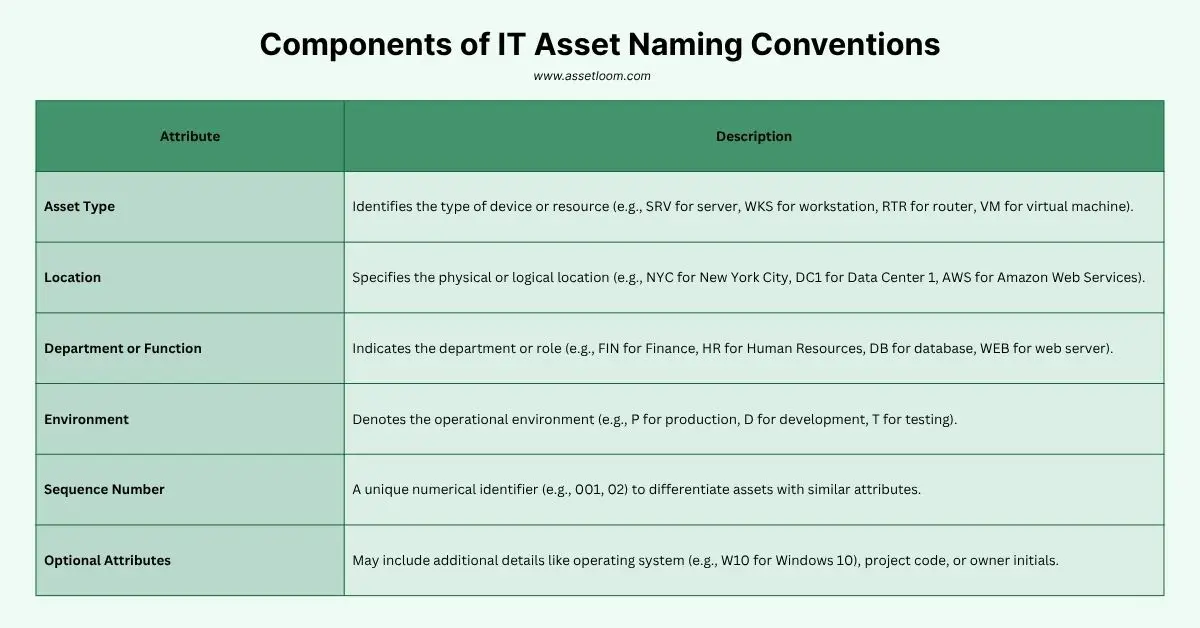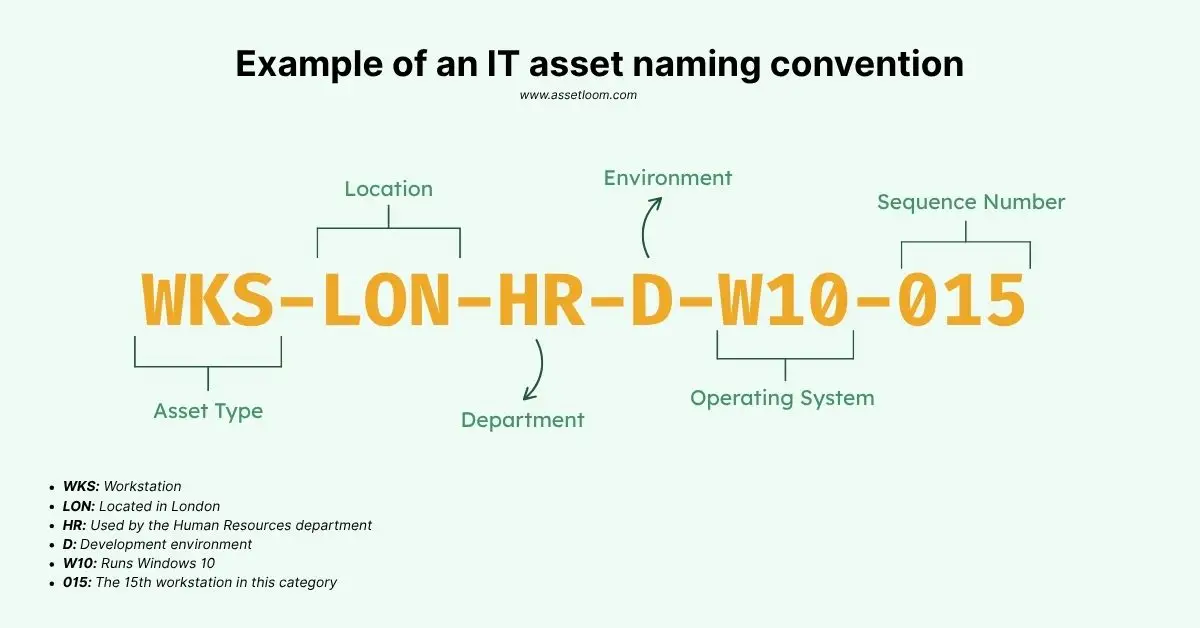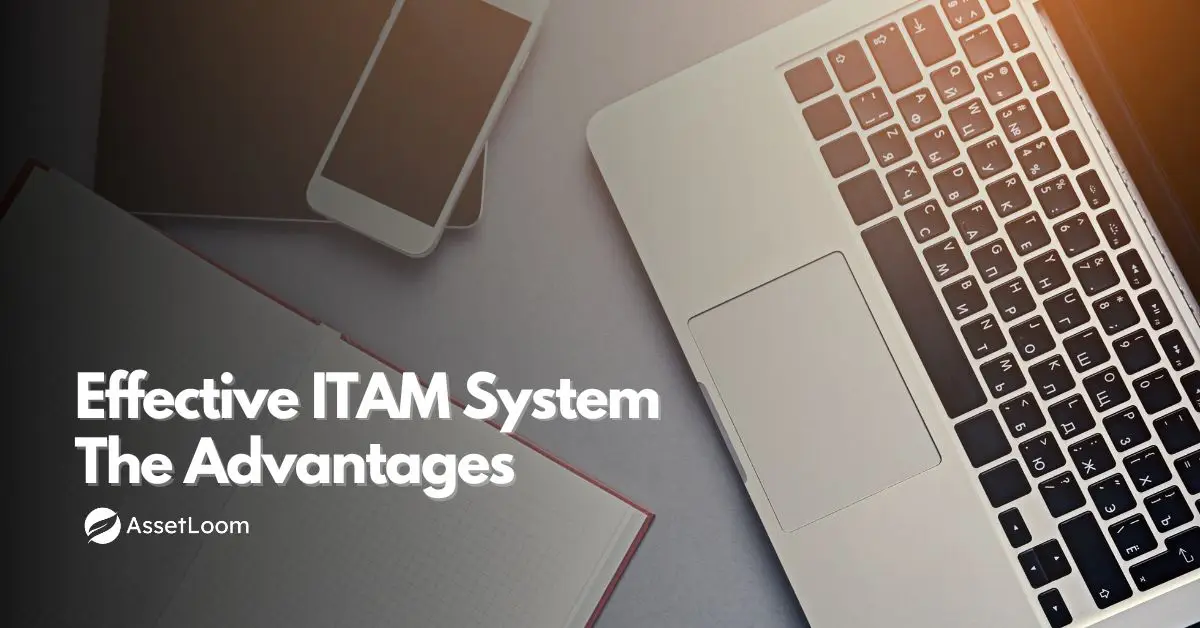IT Asset Naming Conventions: Best Practices
Discover practical tips for IT asset naming conventions to help your team stay organized. Learn what naming conventions are & key components.
Managing IT assets—laptops, servers, routers, or software—can feel chaotic without a clear system. A well-designed IT asset naming convention is like a roadmap: it keeps everything organized, saves time, and makes tech management less stressful. But what exactly is a naming convention, and why should you care? This guide explains what IT asset naming conventions are, why they’re essential, their key components, and how they are used in real-world scenarios.
What Are IT Asset Naming Conventions?
IT asset naming conventions refer to standardized rules and formats used to assign unique, meaningful names to IT assets within an organization. These assets include physical hardware (e.g., servers, laptops, network devices) and virtual resources (e.g., virtual machines, cloud instances, software licenses). The goal is to create names that are consistent, descriptive, and easy to understand, enabling IT teams to quickly identify an asset’s type, location, purpose, or other relevant attributes. Eventually, they can optimize the ITAM process.
For example, a naming convention might produce names like “NY-LAP-01” (New York, Laptop, #1) or “CHI-SRV-03” (Chicago, Server, #3). These names follow a specific format, use abbreviations for brevity, and include details to make identification effortless. The convention isn’t just the abbreviations (like “LAP” or “SRV”), it’s the whole structure, including the order, format, and rules that keep names uniform across your team.
Why IT Asset Naming Conventions Matter
Implementing IT asset naming conventions offers numerous benefits, especially for organizations managing large and complex IT environments. Here’s why it’s worth the effort:
- Saves Time: Clear names allow IT teams to quickly identify assets during troubleshooting, upgrades, or audits.
- Enhances Inventory Management: Consistent naming simplifies tracking and reporting in the IT asset management system (e.g., ServiceNow, AssetLoom).
- Reduces Mistakes: Consistent names prevent mix-ups, like confusing “Server1” with “MainServerNY.”
- Supports Growth: A scalable convention adapts as you add devices, offices, or cloud resources.
- Aids Compliance: Organized names simplify audits for software licenses or security regulations.
Without a naming convention, you might end up with a mess, random names like “JohnsPC,” “OfficeLaptop2,” or “ServerXYZ” that waste time and cause confusion. A good system streamlines operations and sets your team up for success.
Related article: Custom Asset Tags: A Simple Solution to Prevent Asset Loss
Components of IT Asset Naming Conventions
A robust IT asset naming convention typically includes several components that describe an asset’s key attributes. These components are combined into a concise, structured format.

Common elements include:
- Asset Type: Identifies the type of device or resource (e.g., SRV for server, WKS for workstation, RTR for router, VM for virtual machine).
| Abbreviation | Full Form | Example IT Asset Name |
|---|---|---|
| SRV | Server | SRV-NYC-FIN-001 (Server in New York City, Finance Department) |
| WKS | Workstation | WKS-LON-HR-02 (Workstation in London, HR Department) |
| RTR | Router | RTR-DC1-DB-004 (Router in Data Center 1, Database Department) |
| VM | Virtual Machine | VM-SFO-IT-003 (Virtual Machine in San Francisco, IT Department) |
- Location: Specifies the physical or logical location (e.g., NYC for New York City, DC1 for Data Center 1, AWS for Amazon Web Services).
| Abbreviation | City | Example IT Asset Name |
|---|---|---|
| NYC | New York City | SRV-NYC-FIN-001 (Server in New York City, Finance Department) |
| LON | London | WKS-LON-HR-02 (Workstation in London, HR Department) |
| SFO | San Francisco | VM-SFO-IT-003 (Virtual Machine in San Francisco, IT Department) |
| DC1 | Data Center 1 | RTR-DC1-DB-004 (Router in Data Center 1, Database Department) |
| SYD | Sydney | WKS-SYD-MKT-005 (Workstation in Sydney, Marketing Department) |
- Department or Function: Indicates the department or role (e.g., FIN for Finance, HR for Human Resources, DB for database, WEB for web server).
| Abbreviation | Full Form | Example IT Asset Name |
|---|---|---|
| FIN | Finance | SRV-NYC-FIN-001 (Server in New York City, Finance Department) |
| HR | Human Resources | WKS-LON-HR-02 (Workstation in London, HR Department) |
| IT | Information Technology | VM-SFO-IT-003 (Virtual Machine in San Francisco, IT Department) |
| DB | Database | RTR-DC1-DB-004 (Router in Data Center 1, Database Department) |
| WEB | Web Development | SRV-AMS-WEB-007 (Server in Amsterdam, Web Development Department) |
- Environment: Denotes the operational environment (e.g., P for production, D for development, T for testing).
| Abbreviation | Full Form | Example IT Asset Name |
|---|---|---|
| P | Production | SRV-NYC-FIN-001-P (Server in New York City, Finance Department, Production) |
| D | Development | WKS-LON-HR-02-D (Workstation in London, HR Department, Development) |
| T | Testing | VM-SFO-IT-003-T (Virtual Machine in San Francisco, IT Department, Testing) |
- Sequence Number: A unique numerical identifier (e.g., 001, 02) to differentiate assets with similar attributes.
- Optional Attributes: May include additional details like operating system (e.g., W10 for Windows 10), project code, or owner initials.
| Abbreviation | Full Form/Description | Example IT Asset Name |
|---|---|---|
| W10 | Windows 10 | SRV-NYC-FIN-001-W10 (Server in New York City, Finance Department, Windows 10) |
| Linux | Linux Operating System | VM-SFO-IT-003-Linux (Virtual Machine in San Francisco, IT Department, Linux OS) |
| Project-X | Project Code | WKS-LON-HR-02-Project-X (Workstation in London, HR Department, Project-X) |
| Owner-AB | Owner Initials | RTR-SYD-MKT-005-Owner-AB (Router in Sydney, Marketing Department, Owner AB) |
For example: Consider the asset name WKS-LON-HR-D-W10-015:
- WKS: Workstation
- LON: Located in London
- HR: Used by the Human Resources department
- D: Development environment
- W10: Runs Windows 10
- 015: The 15th workstation in this category

This format provides a clear, at-a-glance understanding of the asset’s identity and purpose.
Best Practices for Creating IT Asset Naming Conventions
To create an effective naming convention, you need a few core components that work together. Here’s what makes a naming system tick, along with practical examples to show how it comes to life.
1. Structured Format
A naming convention defines a consistent structure, like a template, for every asset name. This ensures all names follow the same pattern, making them predictable and easy to search.
Tip: Use a 2-3 part format like [Location]-[Asset Type]-[Number].
Example: “SF-LAP-01” (San Francisco, Laptop, #1) or “IT-SRV-02” (IT Department, Server, #2).
2. Abbreviations for Brevity
Abbreviations keep names short and manageable, packing key info into fewer characters. They’re not the whole convention but a critical tool to avoid long, clunky names.
Tip: Use intuitive abbreviations like “SRV” (Server), “LAP” (Laptop), “NY” (New York). Document them in a shared guide.
Example: “CHI-WS-03” (Chicago, Workstation, #3) is shorter than “ChicagoWorkstation3.”
3. Descriptive Elements
Names should include details like asset type (laptop, router), location (city, office), or function (accounting, marketing). This makes identification instant.
Tip: Pick 1-2 descriptors that matter most, like location or department.
Example: “NY-ACC-LAP-01” (New York, Accounting, Laptop, #1) tells you where and who uses it.
4. Scalability
Your convention should handle growth, like new offices or asset types, without breaking. Avoid names tied to specific people (e.g., “JanesPC”) or rigid formats.
Tip: Use two-digit numbers (01-99) to allow for many assets per category. Add prefixes like “CLD” for cloud assets later.
Example: “SF-SRV-01” can scale to “SF-SRV-99” or “CLD-SRV-01.”
5. Consistency Rules
Rules ensure uniformity, like always using hyphens (not underscores) or sticking to a set order. This prevents chaos like mixing “Server1” and “NY_server_2.”
Tip: Document rules in a one-page guide, e.g., “Always use [LOC]-[TYPE]-[NUM], hyphens, two-digit numbers.”
Example: “LA-RTR-01” follows the same rule as “NY-LAP-02.”
To Sum Up
IT asset naming conventions are more than just abbreviations, they’re a structured system to keep your tech organized, efficient, and secure. By using a clear format, descriptive elements, and consistent rules, your team can save time, reduce errors, and handle growth with ease. Whether you’re tracking inventory, managing networks, troubleshooting issues, or boosting security, a solid naming convention is a small effort with big payoffs.

Subscribe for Expert Tips and Updates
Receive the latest news from AssetLoom, right in your inbox.


